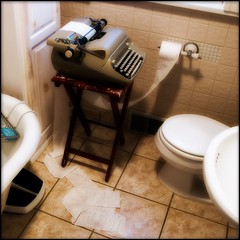8 Tips to Write Better Paragraphs

Paragraphs are not just the thing you put five of in a longer essay, they are the unit of though and of idea. All things in life are made up of smaller things, and these smaller things are made up of even smaller things. In writing we begin with letters which combine to make words; words combine to make sentences; sentences combine to make paragraphs, and paragraphs combine to make things we don’t need to worry about here. Anyway, enough talking about little things; let us move on to more important things like the structure of a paragraph.
Obviously, I just made a paragraph: It has all the basic elements that a paragraph needs, a topic sentence, a supporting sentence, several (3 – 15) “meat” sentences and a concluding/transitional sentence. While the paragraph was informal, it still followed the basic structure. Let’s break this structure down.
The Topic Sentence
- This should be your main point or at least an introduction “hook.”
- It does not have to be one sentence because there are times where the paragraph’s topic can be broad enough to require more than one sentence. However, be warned: shorter is often better on the web, so don’t spread what can be said in one sentence into two.
- The topic sentence should be able to stand by itself. However, one technique to get a readers interest is to use a vague or shocking topic sentence and then expand on that using the supportive sentence. However, tricks such as this should be used sparingly because they quickly become boring.
The Supportive Sentence:
- The supportive sentence will directly lead you into the rest of the paragraph from the topic sentence.
- It may expand on, clarify, or add to your topic sentence. This is especcially important when you open with a “hook.”
The “Meat”
- The content of your paragraph must respond to your topic sentence and support it. The topic is where you make a statement, and the rest of the purpose of a paragraph is to explain your topic sentence.
- Make sure any sentences you in the meat fit in with your topic.
Concluding a paragraph
- The conclusion can be anything you want, but it should sum up the paragraph, and if there is another paragraph, your conclusion should logically lead the reader to the next paragraph.
- It is the last place you can make your thoughts known, but unless you are going to start another paragraph don’t introduce more evidence or ideas.
- It is also a good place to hook the reader and make them think about what you have said. End with a thought that can be pondered. This will also serve to hook people into making comments.
This is the basics of paragraph structure. By following these basic steps, you will find that your writing will be a little more logical and well-structured. Powerful writing is structured. It may not follow all conventions, but it is consistent. However, structure is only half the battle: next we will worry about style.
 Image credit: Olivander
Image credit: Olivander